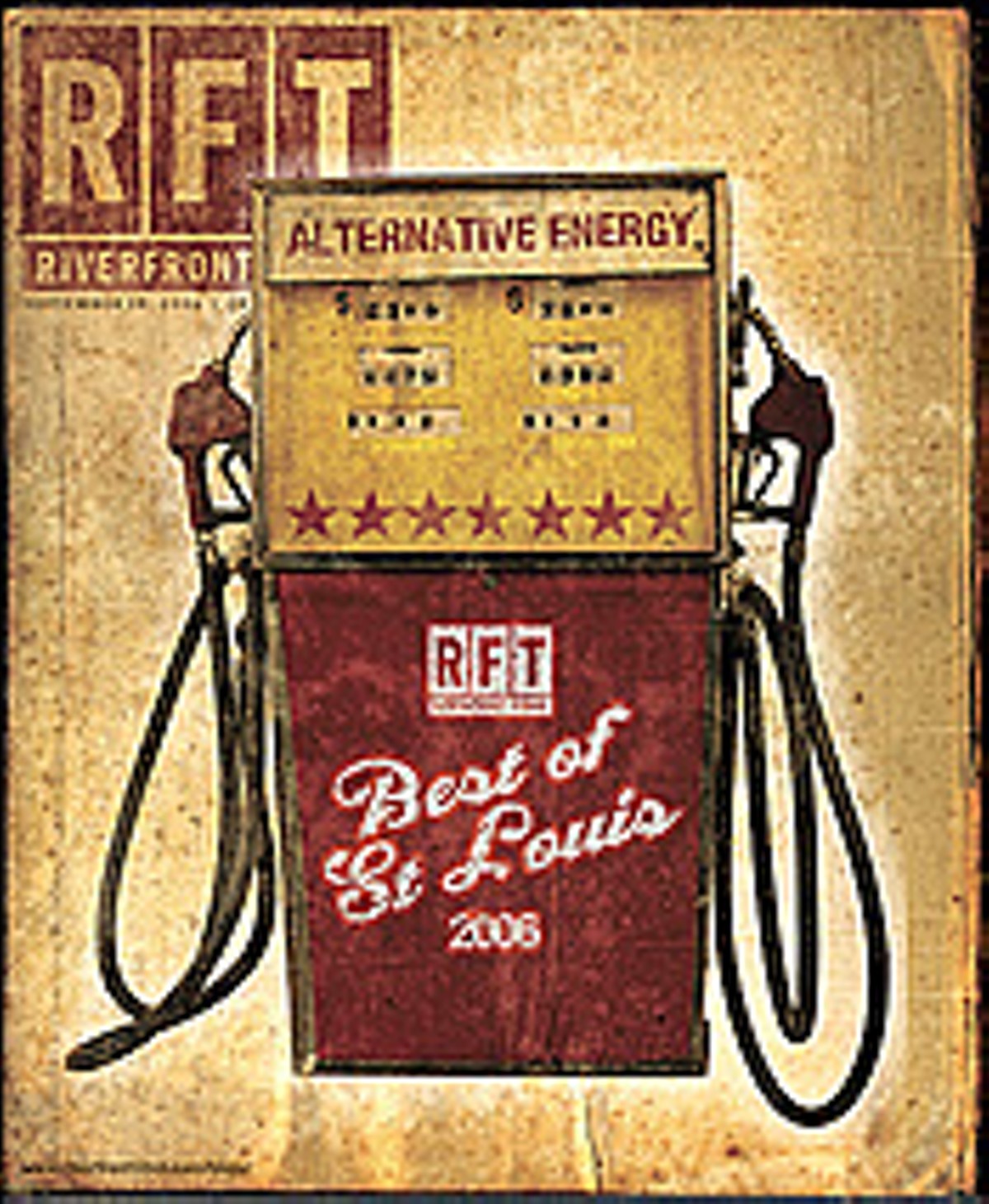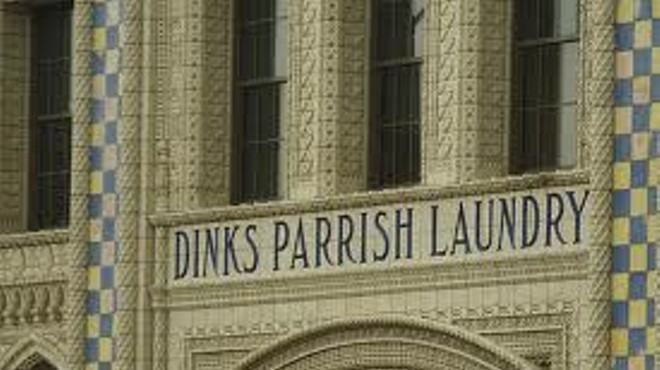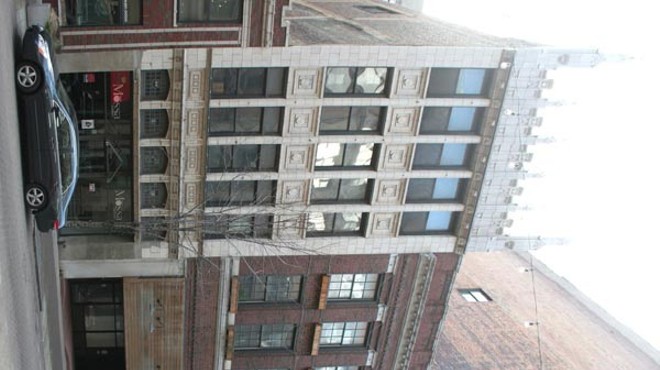Jenna Fischer attended Nerinx Hall High School and Truman State University, where she received a B.A. in theater. Now the St. Louis native with the lovable demeanor and gorgeous-girl-next-door looks is Pam Beesly, the clandestinely snarky receptionist on NBC's Emmy-winning mockumentary sitcom The Office. Not that Fischer's gone all Hollywood on us. She's kept it Midwestern, marrying St. Louis native James Gunn (director of Dawn of the Dead and Slither) and staying satisfied with simple joys (like the Roomba she requested for her birthday). Pam Beesly may have won the annual Dundie award for Whitest Sneakers, but Fischer scores a far higher honor: "Best Local Girl Made Good." Way to represent!
Sure, Dan Nassif was excited when he secured a slot at the 2006 World Series of Poker, but he didn't think he'd finish anywhere near the top. "It's too surreal to even think about," the Riverfront Times advertising exec told Unreal the night before he took his seat at the $10,000 No-Limit Texas Hold 'Em Championship's final table. Yep, out of a field of 8,773 gamblers, Nassif was about to join eight other finalists competing for the $12 million jackpot. He'd had a bad beat the day before and was going up against the big dogs with only $2.6 million in chips, the table's smallest "stack." Not long after the command to "shuffle up and deal" rang out, Nassif went head-to-head against chip leader (and eventual winner) Jamie Gold, who promptly knocked him out. Nassif had to settle for $1.5 million. The following Monday, he showed up for work — late.
Archetypal villain: shadowy, compulsively black-clad, mustachioed. Santino Rice: bombastic, ga-ga for lavish colors and textures, and...OK, so the dude does sport some seriously deviant facial hair. If the phrase, "Andra, I don't know why we always have to fight at Red Lobster," means anything to you, you're already familiar with Santino the eye-rolling, beat-boxing, Tim Gunn-mocking, "Urbi et orbi" ("To the city and the world")-spouting designer from season two of Heidi Klum's BRAVO reality contest, Project Runway. A St. Charles native who moved to LA at age seventeen to attend the Fashion Institute of Design and Merchandising, Santino was the contestant we loved to hate, what with his eleventh-hour meltdowns and bickering with judge Nina Garcia. But when he won the Nicky Hilton party-dress challenge, we couldn't have been prouder. Just like his native St. Louis, Santino knows he's fabulous and isn't afraid to flaunt it...wait for it!...with style.
If you watched the new Cortex One building go up last year, you might have thought, Oh no, another prefab, tilt-up concrete building, and one more enduring signal that the region remains committed to mediocrity in the design department. But that's all wrong. The Center of Research, Technology & Entrepreneurial Exchange is a well-conceived, beautifully executed modernist building that takes prefabricated technology and pushes it forward from simple serviceability to the realm of architecture. Its south and north faades, in tilting out into space, pay homage to their techno parents. Inside, light plays magical games. The building addresses the neighborhood and the city with authority and originality, and it reveals itself on all sides as a place for conducting the serious business of science. All this delivers to the building's owners, its biotech tenants-on-the-grow and the wider community a facility operating not only as a utilitarian vessel but also as an expression of optimism and sophistication. All that, and it's all green too, with a list of LEED points as lengthy as it is impressive. Credit where credit is due: The 165,000-square-foot brand-new landmark is a cooperative effort of Cortex, Washington University, Saint Louis University, UMSL, the Missouri Botanical Garden and the Barnes-Jewish Hospital Foundation. Forum Studio was the architect; Clayco Construction Co., a pioneer in the development of tilt-up construction, was builder.
In the glorious Hereafter, angels will carry your dirty duds (is there stink in Heaven?) to clones of the Dinks Parrish Laundry building on Olive Street, where firm-bodied Swedes will scrub your clothes with blessed detergent and holy water. One look at the faade of this midtown glory is proof enough. It's either a heavenly flight of fancy or the product of a bricklayer on LSD: Moorish architecture on steroids, replete with spires wrapped in carved grape vines and snowflakes, flower blossoms and clamshells. Until two years ago it languished in midtown like Sandra Oh with a fat suit on. But a recent refurbishing injected new life into the building, which now houses the Loft Jazz Club and a half-dozen loft-style apartments. The fall promises to bring a coffeehouse and an Asian stir-fry joint.
Dan and Mia Jameson, the husband-wife team responsible for rehabilitating the Lucas School House, bought the historical property in the fall of 2004 intending to live there. But after chatting with nostalgic locals, they decided the Soulard edifice they'd bought for $429,000 needed to be shared with the public. The Jamesons went about their rehab with an eye toward respecting the edifice's heritage and safeguarding its memory. "At least once a month, I have someone drop in who used to attend school in this building," Dan says. "We had a couple of men in their mid-seventies go upstairs [to the old gym] and crouch down to show us how they played handball." On May 16, 2006, the Jamesons debuted Lucas School House as an entertainment/private-party venue. The key to the property's reworking, which Dan describes as "a new building within its old shell," was staying true to the original 1898 architecture. Named in honor of the school that once thrived here, Lucas School House still boasts its original wainscoting and stained-glass windows — and the Jamesons ain't finished yet: They're also overhauling the church next door. "For all of the hard work, we still wake up every morning pinching ourselves," says Dan. "It's too good to be true." We respectfully disagree: It's too good, all right, and also true.
Ah, the new Busch Stadium. A worthy palace for baseball's best fans? A pleasant, if unoriginal, variation on the theme of new "old" ballpark? Over dinner not long ago, a St. Louis expat put it in perspective: "I just couldn't get over the view," he exclaimed. "St. Louis actually has a downtown. I mean, that's my city right there." The view beyond the center-field fence is a singular take on the familiar skyline: The Arch sits slightly off-center, prominent but not overwhelming, while the Old Courthouse, nestled at the base of the looming office towers, gleams like a jewel. You can't see everything, of course. But from where you are, you get the sense you're at the center of everything, a better city rising around you.
We're happy for Washington Avenue's success and everything, and we hope merchants continue to flock to the street. But why should we give this award to some coattail-riding latecomer when, really, the best addition to Washington Avenue arrived when Dwight and Rosemarie Reum (pronounced reem) opened the Mossa Center in 1984? It was the Reums who first saw Washington Avenue and decided to invest, selling high-design furniture imported from Europe, stuff that until then could only be found five hours away in Chicago. When Dwight Reum passed away in 1996, Rosemarie kept the fire burning, and the Mossa Center continues to be a destination for moneyed aesthetes looking for great design. Other high-end furniture stores have joined the Mossa Center downtown in the past few years, but without the Reums' frontier spirit, downtown wouldn't have progressed as it has.
When you go to an art museum, do you get to paint? When you tour an aerospace museum, do they fly you to the moon? No, and no. So when you go the International Bowling Museum & Hall of Fame, do you bowl? Hell, yeah! Your $7.50 admission ($7 for ages 66 and up; $6 for kids 16 and under) buys you four free frames in this dare-we-say quirky museum's basement. You and your out-of-towners will also learn how "lane walkers" work, and why bowling alleys use pine and maple for their lanes. Upstairs the museum's floors are given over to the fascinating places held by priests, dwarves, immigrants, outlaws and kings in bowling's history, not to mention an accounting of the sport's own "civil war." Bowling aficionados will delight in poring over the memorabilia in the Hall of Fame, but nonbowlers should be tickled, too, as there are plenty of little surprises here, including a splendid collection of nineteenth-century bowling-themed beer steins made by Villeroy & Boch.
Any Sunday School pupil worth his weight will tell you that sinners descend into Hell. The St. Louis County Circuit Court throws a wrench into that simple truism. Upon entering the immense brick edifice, visitors ascend (via elevators, no less!) into this modern-day purgatory. You want human pathos? The place is swarming with tortured souls — from the domestically abused to the financially wronged. You want rightful indignation? Take a gander at the jumpsuit-clad perps and the weeping families of violent crimes. You want truly divine comedy? Look no further than the attorneys in their ill-fitting suits and the obese clerical workers shuffling by in their white Reeboks and Doritos-stained blouses. Just as Hell takes all comers, so too does the legal system. It may not be pretty, but it's damn well worth watching.











